To take a journey along the Silk Route is like nothing else you will experience on a China vacation. It offers colourful history, dramatic scenery, fascinating people, and surprises galore. The time I travelled on the Silk Route (also known as the Silk Road), I experienced an extremely different and absolutely fascinating part of China from the better-known destinations such as those along the eastern seaboard of the country. I also enjoyed, first-hand, vastly different cultural aspects of China, plus saw the history of the Silk Route unfold before my eyes. Before I take you on a journey along this marvellous and exciting part of China, I should provide a few details on the background of the Silk Route.
History of the Silk Route

The Silk Route was an ancient network of trade routes connecting Europe and China. The name, "Silk Route", was not applied in the original beginnings, however. The name came much later, emanating from the very profitable trade in Chinese silk in the early days. It was coined in the 19th century by a German traveller who made several expeditions along it in the mid-1800s, but it wasn’t the popular term used today until the 20th century. Silk was almost exclusively made in China until the 7th century and foreigners came to China to purchase it in exchange for other merchandise. As trade developed, specific routes came into being with horses and camels transporting the merchandise across them. Then came the caravanserai - places for travellers to stop at and break their journeys, such as guest houses or inns. Apart from eating and sleeping, the merchants traded goods and provided each other with exchanges of culture. One of the most famous of these travellers was Marco Polo who travelled along the Silk Route in the 13th and 14th centuries. His first foray from Italy to China took 4 years. However, he returned with not only silk but jewellery, jade, herbs, and spices. When we think of pasta, we more than likely consider Italy to be the originator of this dish. In its present form, yes, but it is believed that Marco Polo brought it to Italy in the form of Asian noodles.
Where is the Silk Route?
As I say earlier, the Silk Route was a trade route between Europe and China. However, it is not just one well-trodden path, as it diverges into 3 routes just in China alone, and once it leaves China, it diverges again. For our purposes, I am going to write about the route which is the one most of today’s visitors follow on their China vacation. Officially, travelling east to west, it starts in Xian. The reason for this is because Xian was the ancient capital of China from the 3rd to 10th century AD. For purposes of interest, it ends in Kashgar in western China.
Highlights Along the Silk Route
The Ancient Capital of Xian
The first thing you will notice about Xian is that the old part of the city is surrounded by a wall which, in total circumference, is 14 kilometres/8.5 miles in length. You can, if so inclined, walk around the full length of the wall ramparts and enjoy the views of the city as it is raised high above ground level, or just take a short stroll to get a feeling for it.
However, Xian’s major attraction has to be the world-famous Terra Cotta Warriors. These are 8000 thousand life-size replicas of soldiers made of a clay-like material. They were constructed 2000 years ago to symbolically protect Qin Shi Huang, the first emperor of United China, after he died and was buried in a nearby tomb. Two amazing facts about the Terra Cotta Warriors are that a) they are all life-size and every one of them appears to be at least facially different, and b) they were only discovered and excavated in 1974. Today, they are housed in hangars to protect them. Apart from the soldiers, there are 130 chariots with 520 horses, and 150 cavalry horses. Other major attractions in Xian include the excellent Shaanxi History Museum with its treasure trove of Imperial artifacts and the Big Wild Goose Pagoda, an important Buddhist site dating back to the Tang Dynasty, 1300 years ago. You can also take in the Tang Dynasty Show, a somewhat commercial but colourful performance and a fun and enjoyable experience, on your China vacation, which reenacts the days of the Tang Dynasty era (619-907 AD) through song and dance.

Lanzhou
As a city, Lanzhou, situated on China’s second longest river, the Yellow River, is not particularly attractive. However, there are interesting places to visit. The first one is the Thousand Buddha Caves (also known as Bingling Si) which are about 35 kilometres/22 miles outside of the city. They are the second-most important cave of this type. Inside are almost 200 murals painted on the cave walls, 700 stone statues, and 80 clay sculptures, all of Buddha and other Buddhist characters, all well preserved, dating back as far as 300 AD. I personally enjoyed the Hezheng Lu Night Market. Just stroll down the streets here and especially take in the food on display, freshly prepared for the locals. You might want to try a few samples. Also enjoyable is a walk along the river bank through the Waterwheel Garden, with its impressive traditional waterwheels originally used to irrigate farmland around Lanzhou. There is a museum called the Strange Stone Museum. Not too long ago an unusual stone was found locally with a metal bar inside it. The type of stone is totally unknown on Earth and it is thought that it was part of a meteorite. What has fascinated geologists around the world is not so much the stone but a metal bar contained within the meteorite which appears man-made. It has been suggested it was put there by aliens somewhere in outer space! I enjoyed a visit in Lanzhou to a local man’s home, a person who had an extraordinary collection of several hundred stones, which might sound dull, but I was pleasantly surprised at the many different types of stone. Unfortunately, I can’t remember his name but I find it interesting that Lanzhou has this legacy of stones.
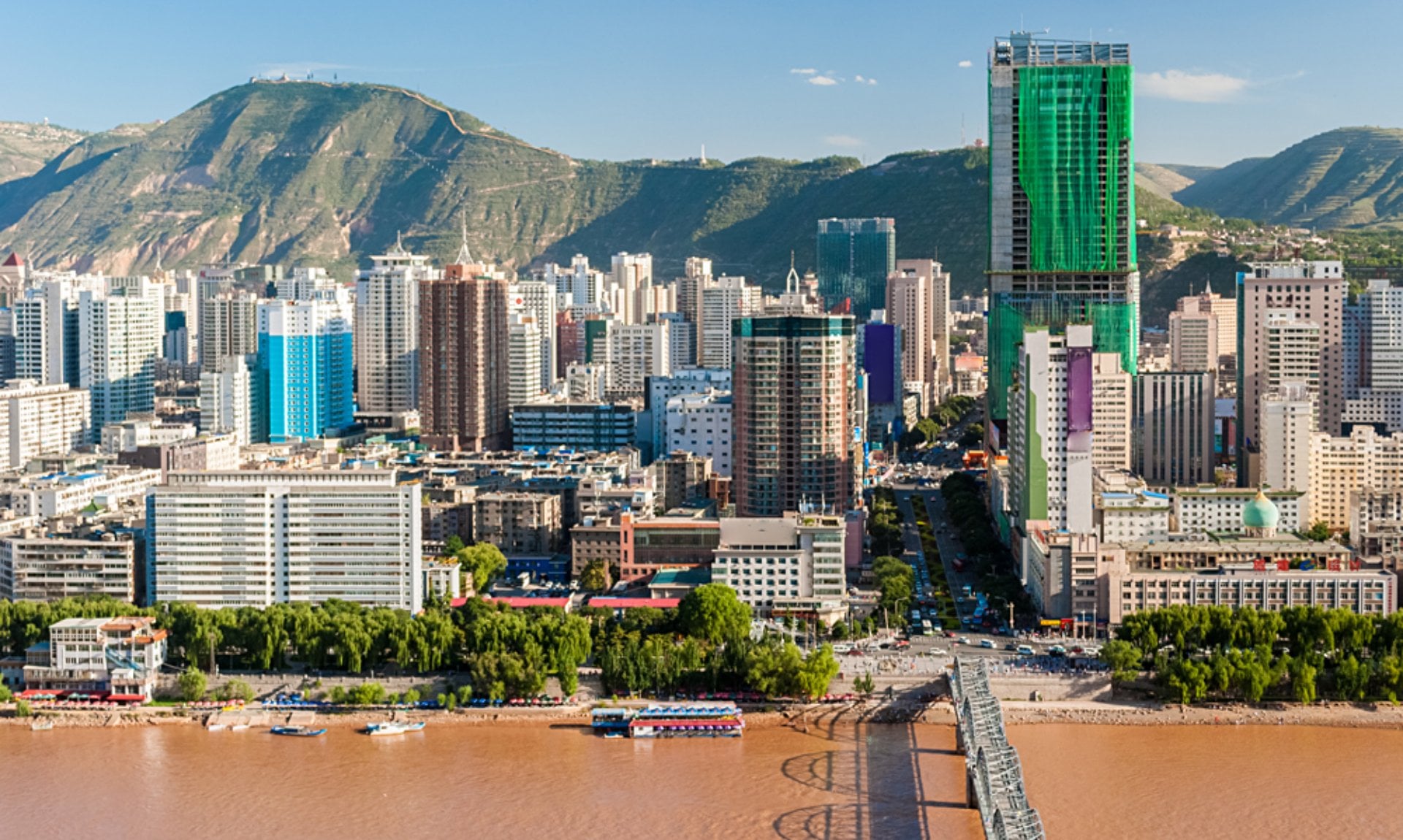
Jiayuguan
The city of Jiayuguan is well-known for one thing. The western end of the Great Wall of China is to be found here. It is situated just outside the city at the Jiayu Pass. When I saw it, it was just a load of rubble of a fortress, but I understand it has been rebuilt and restored. It is positioned at the start of the vast Gobi Desert, the fourth largest desert in the world. There is also a small museum you can visit.
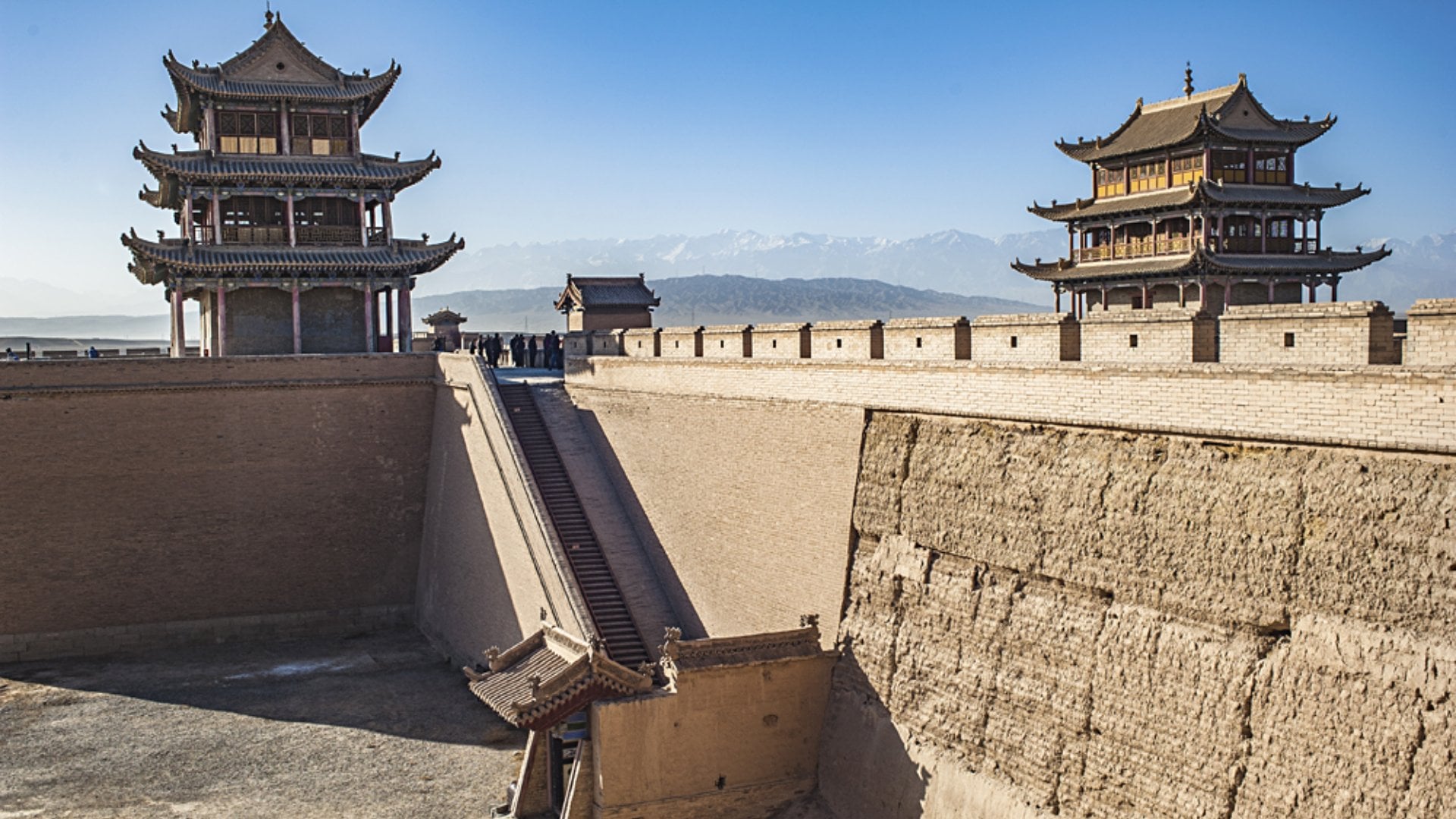
Dunhuang
Dunhuang is approximately half-way along this part of the Chinese Silk Route in the Gobi Desert and, as such, used to be a major trading centre. The most important site here is the Mogao Caves just outside the city. These caves are more impressive and more important than the caves outside Lanzhou. The caves are stacked on top of each other, some 5 stories high. In total, there are 735 caves all noted for their Buddhist art and manuscripts. They date back as far as 4th Century AD. Inside the caves are Buddhist murals and statues. One of the statues is 34.5 metres/113 feet high. On my visit here, I was interested to note that some caves are locked and opened only for special tour groups. Some of the caves are so dark that I was supplied with a small flashlight.
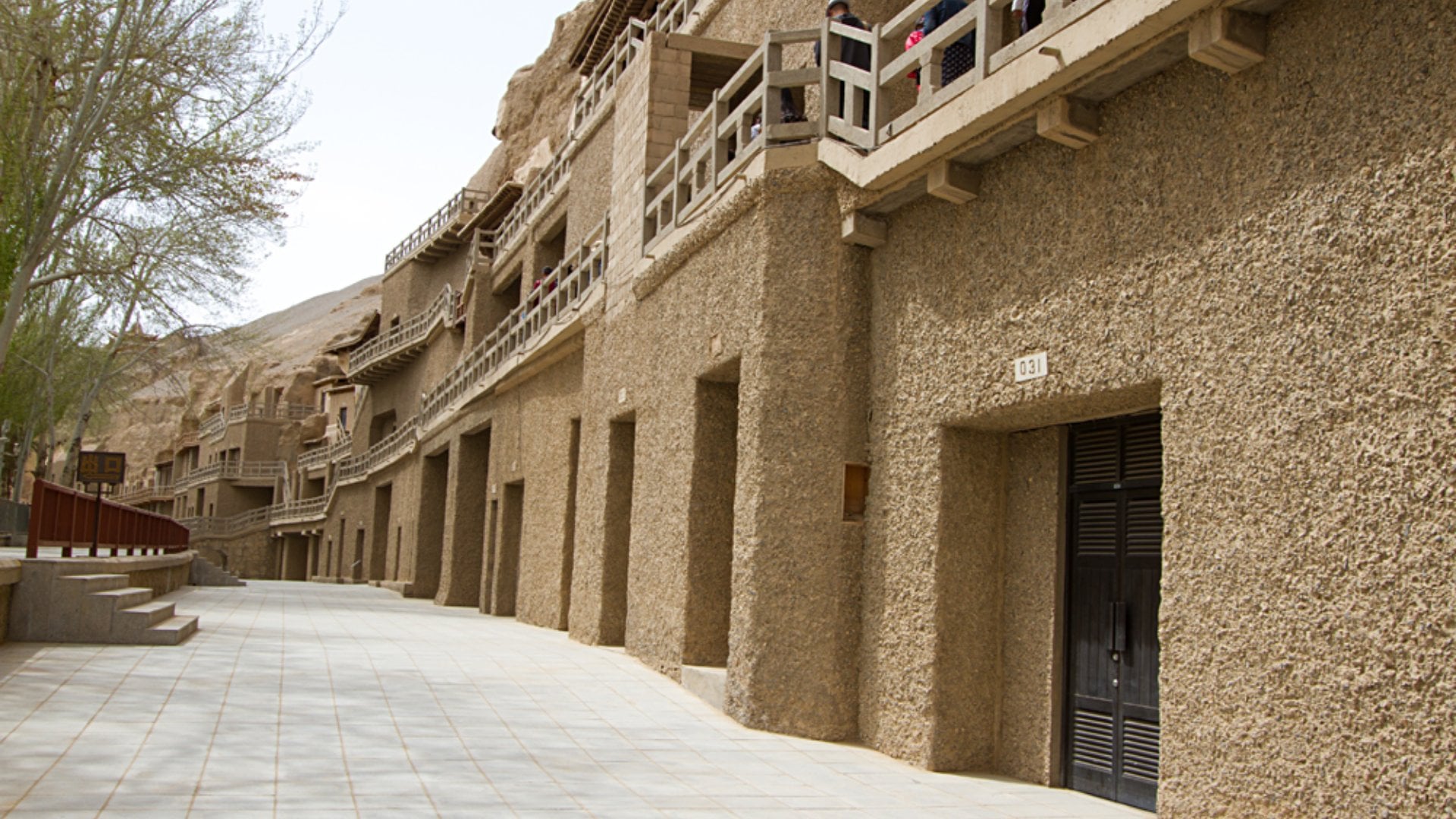
Crescent Lake is a lake surrounded by sand dunes, offering a beautiful contrast. The lake is naturally in the shape of a crescent and the water is crystal-clear. I quote a source, "Some say it reminds them of the eye of a beautiful woman, lucid, beautiful and amorous. Others say it looks like the mysterious, gentle and seductive lips of a pretty woman, or a slice of a lush, sweet and crystal cantaloupe." The sand dunes range in colour - red, yellow, green, black, and white. You can have fun here by riding a camel, starting from the entrance to the lake. Then you can climb to the top of one of the sand dunes carrying a supplied tin sheet and slide down the hill. As you go down, the noise of the shifting sand sounds like a quiet dulcet-toned echo, hence the name, Echoing Sand Mountain.

Turpan
Continuing along the Silk Route on our China vacation, we now arrive at a different landscape. We are now in Xinjiang Province which is an autonomous region of China and home to the ethnic group known as Uyghurs. The city of Turpan, also known as Turfan, is situated at the lowest elevation in China. It is technically in the Gobi Desert but is, in fact, a fertile and green oasis. It produces high-quality grapes, in what is known as Grape Valley. You will see vineyards everywhere. Much of China’s wine is produced from grapes grown in this region. By the way, do try some Chinese wine. When I first started travelling to China, the wine tasted like a type of vinegar, but in time, the Chinese have learned how to vastly improve their wine-making skills. There are some unusual and interesting places to visit in Turpan. First up are the Flaming Mountains. I love the name. Actually you don’t visit them. They are a backdrop to the city and can be viewed very easily. With the sun overhead, this range of mountains glow and shimmer with the heat. This causes them to be a flaming red and to be called the Flaming Mountains due to their colour at certain times of the day. It is said that the temperature on the mountains can reach 70°C/158°F. The Bezeklik Caves, situated under the cliffs of the Flaming Mountains, are a series of Buddhist cave grottoes dating back to between the 5th and 9th centuries AD. They contain thousands of wall paintings of Buddha. Not far from here, is the ancient city of Gaochang. This is an archaeological site first built in 1 BC and destroyed in 13 AD. Even after all this time, the outline of the city is still viewable. Another ancient city is Jiaohe, first built in 60 BC. It is the largest and best preserved ancient city in the world. One other site to consider is the Karez Water System, an underground irrigation system designed over 2000 years ago. It still produces a water supply to this day. In Turpan itself is the Emin Minaret, the largest ancient Islamic tower in the province of Xinjiang. It is about 43 metres/140 feet in height and is built in a style traditional for Islamic buildings. At the top of the tower, there is a small viewing platform which allows great views of Turpan and its surroundings.
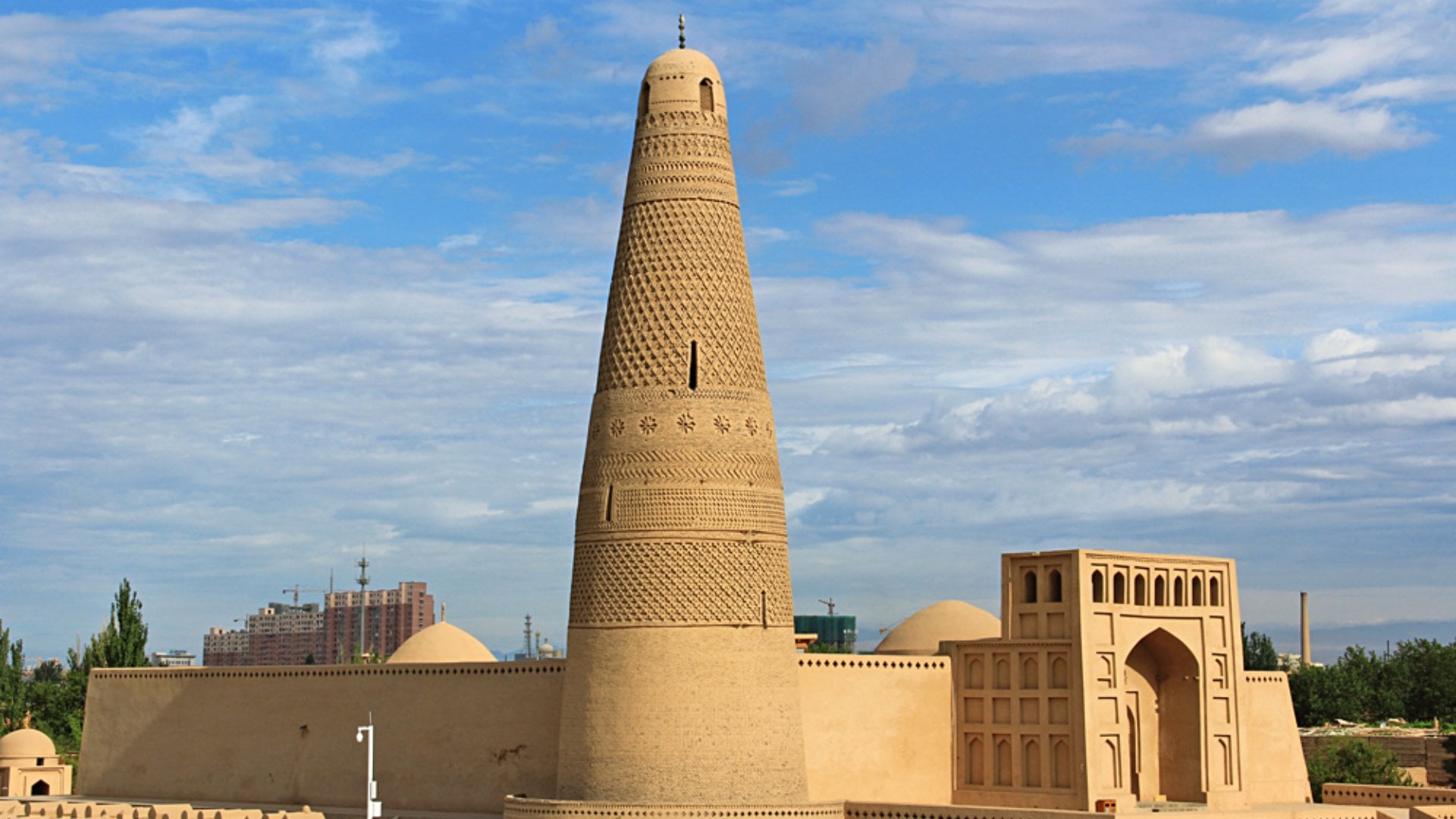
Urumqi
Urumqi is the largest city in China's western part. It is something of an anomaly to the rest of the region as it is a fairly modern city and serves as a regional transportation hub. In the Xinjiang Silk Road Regional Museum, there is a collection of more than 50,000 items dedicated to ethnic lifestyle. This includes items to do with costumes, dress, religion, marriage customs, festivals, and other aspects of the lifestyle of the 12 minority groups that live in Xinjiang. There are also historical relics such as iron wares, bronze wares, brocades, pottery, coins, and rubbings from stone inscriptions as well as weapons. One of the highlights of this museum is the ancient mummified bodies on display. There are 21 specimens in total and the piece de resistance is called the Loulan Beauty, a well preserved woman thought to be around 4000 years old. The Chinese knew well before what Egypt learned about embalming. About 45 kilometres/28 miles south of Urumqi is the charming, somewhat reminiscent Swiss-like Heavenly Lake, formed over 1000 years ago by a major volcanic eruption. In the background are some stunning mountain ranges. In the summer, it is a cool resort and where people go boating, have picnics, etc. Around the Heavenly Lake area, you will see the nomadic Kazakhs (Cossacks) in this region. It's where they spend the summer herding their cattle and sheep. It is quite a sight to see them flying by on horseback. You will also see camps of yurts (large tents) in which they live.
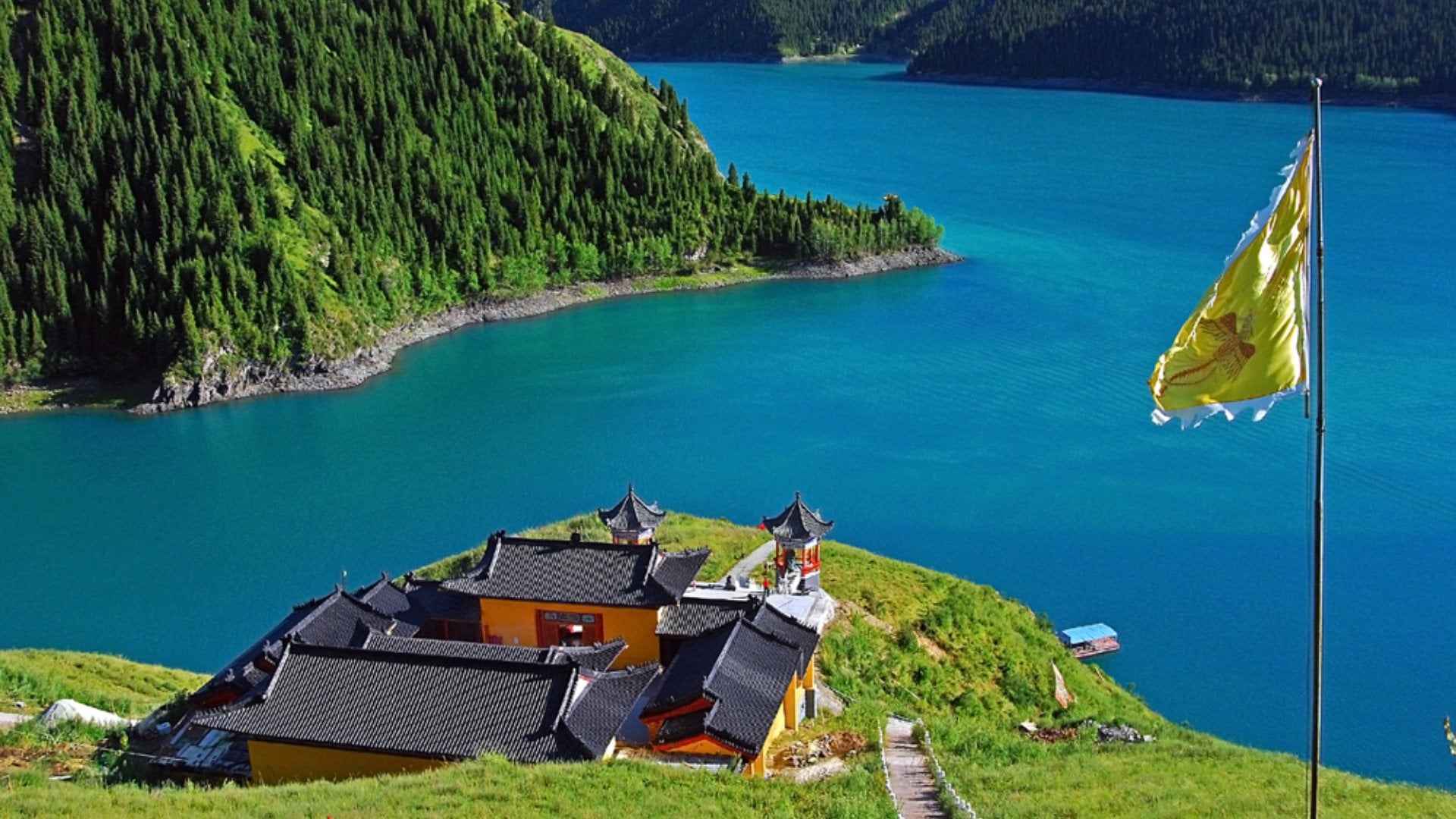
Kashgar
We reach the end of the Chinese Silk Route on arrival in Kashgar, the western-most city in China. It is a fitting conclusion to your China vacation as it is possibly the highlight of the journey. Kashgar has been a trading post and was a very important city en route between Europe, the Middle East and Eastern China. It is also where, if continuing along the Silk Route, it divides into two routes travelling further west to outside the country. You will see in Kashgar many ethnic Uyghurs and other minorities dressed up in their traditional clothes.
The colourful Sunday Market here is something not to be missed under any circumstances. It is said to be the largest market of its type in Asia. Every week, traders, farmers, and others come in from the outlying countryside in droves to attend the Sunday Market. It covers a vast area, and just walking around, taking in the extraordinary sights and sounds you will come across, with their exotic flavour and ambience, will astound you. This market has been taking place for centuries. There is a dedicated area for the sale of livestock which includes everything from sheep to camels, cows, horses, and donkeys. Watch the prospective buyers haggle and check out their purchases by riding the camels and horses. Then there is the extensive spice market which contains hundreds of different types, plus flowers and fruit. There are also food stalls from which exotic aromas arise. One of my favourite sights was to watch people having their haircut or having dental treatment done right out in the open. It looked very primitive I suppose, but I presume the price was right and the farmers, etc. don’t get other opportunities for these services. While in Kashgar, you should visit the Id Kah Mosque, a very imposing and attractive building which is over 500 years old. It contains the Hall of Prayer, the Doctrine Teaching Hall, the Gate Tower, a pond, and some other structures. Locals go there to pray every day but on Fridays, you can expect to see 6000 or more worshippers. I have been told that, if there is a special religious festival, there could be up to 30,000. At any time, it is a great spectacle.
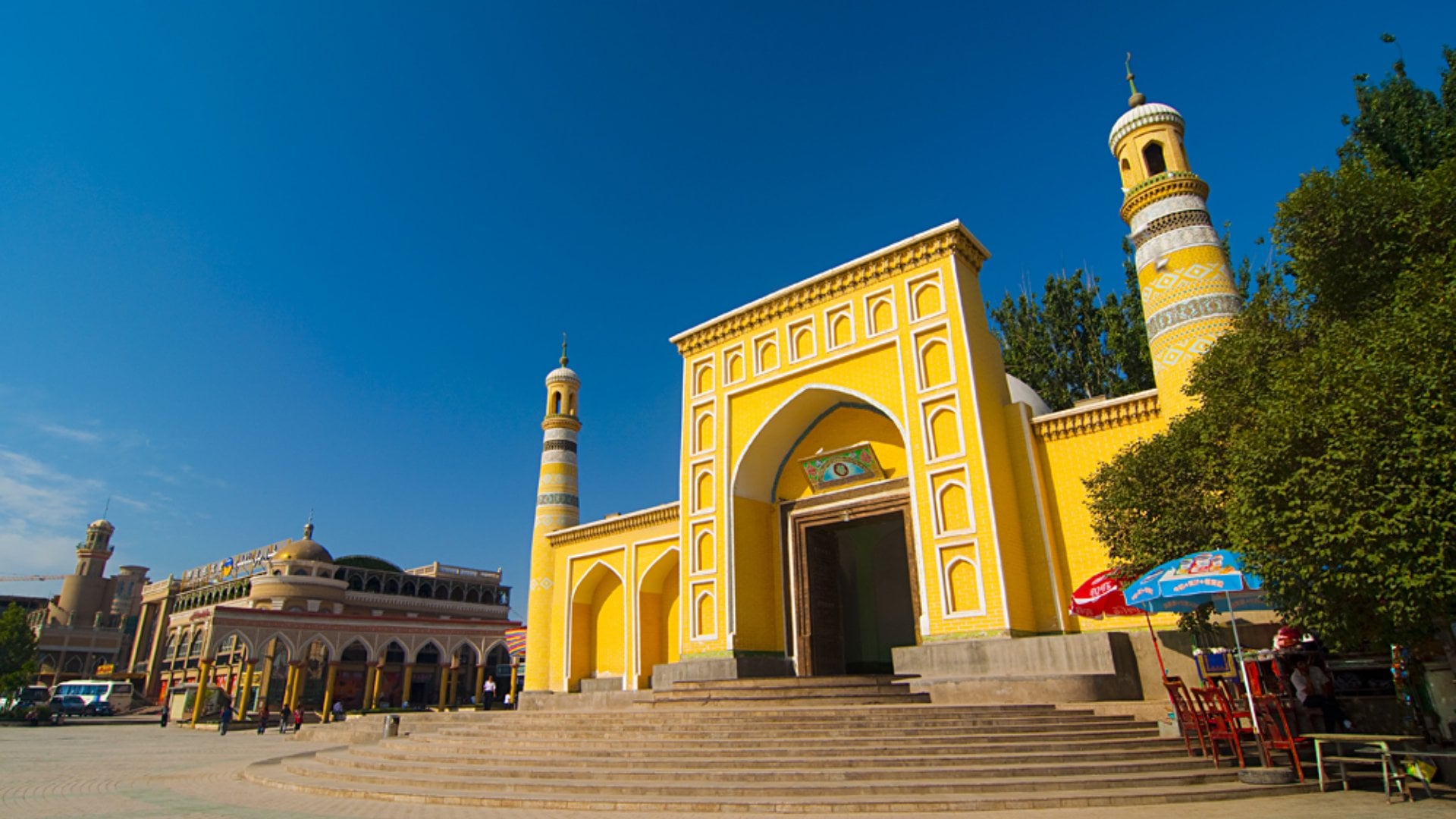
Conclusion of the Silk Route Journey on Your China Vacation
It is usual, after staying in Kashgar, to fly back to Eastern China in order to either fly home or continue to other parts of the country. Once this journey has been completed, you will have experienced a part of China like no other, and will surely have vivid memories of your China vacation for a long time to come.
Robert was born in England and while in high school, he took his first venture outside of the country to Switzerland on a school trip. This was the start of a long journey exploring the world. He moved to Canada where he continued his career working for travel organizations including many years as Vice President of Canada's largest travel organization. Later, he spent 20 years with Goway Travel. His travels have taken him to over 80 countries finding out that every single one of them has something interesting to offer. Robert’s advice to all travellers: wherever you venture, always find out what is around the next corner.
Get Inspired
Inspire your wanderlust with our globetrotting tales.
Unlock more by subscribing to our newsletter
With our newsletter, you’ll get access to regular communications that inspire you and help you explore the world your way

